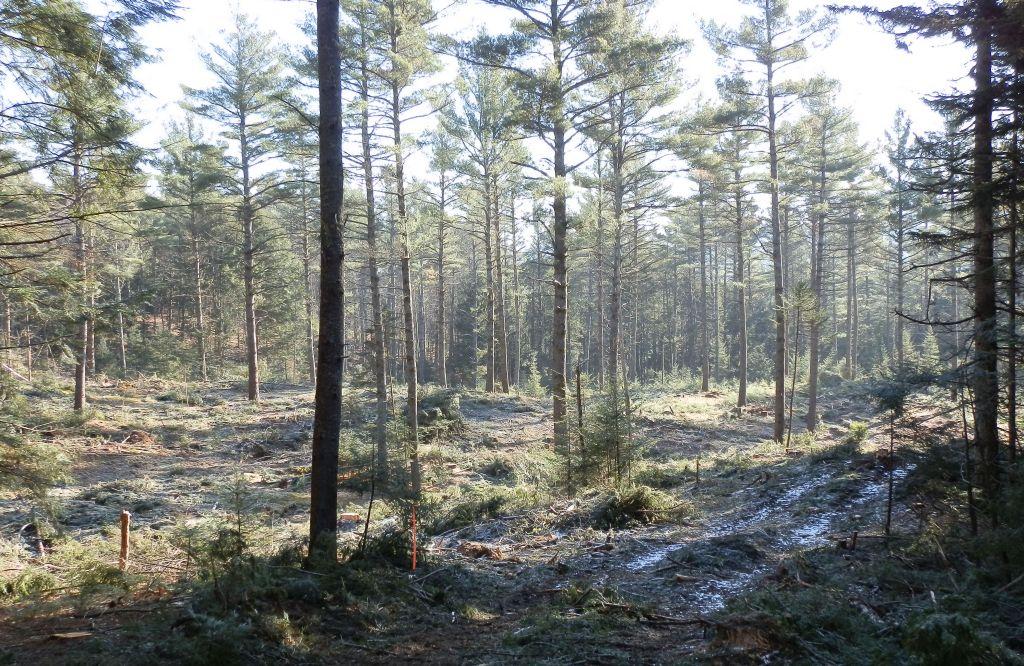Careful Timber Harvests are a Means for Healthy Forests of the Future
- Tags:
- Timber Harvesting,
- Working Forests

Timber harvest area Victor's Woods, Danbury NH. Photo by G. Frame.
An upset caller told me recently that we had “destroyed” a particular piece of forest. Statements like this aren’t easy to hear, but they are opportunities to try to clear up some misunderstandings about forestry.
Change isn’t always pretty. Maybe I should say new change in the woods is rarely pretty, especially when it happens within your everyday field of view. And, of course the change I’m talking about is the visual change resulting from timber harvesting.
Our mission states that we will seek to perpetuate the forests of New Hampshire through their wise use. Wise use has always meant some level of product or service extraction from the forest done with thought for the future and without damaging the underlying structure that allows our New Hampshire forests to regenerate.
Our mission creates a conflict: How are forests perpetuated by being used? Wouldn’t it be better to perpetuate them by leaving them alone and not using them at all except to walk through and look at? No. Drawing the leave-alone argument out to its ultimate end, New Hampshire’s forests would contain very large trees and a relatively few wildlife species.
The only opportunity for variation would be for something to die before there was room for something else to grow. New forests and the broad array of wildlife and tree species they contain could only form in areas created by wind and ice storms, flood, erosion, fire and other natural events. But in light of a growing population and societal demands for fire and flood suppression, the leave-alone alternative would not be wise.
The Forest Society mission recognizes the reality that with land ownership come societal responsibilities. Our resources are available to be shared in a managed, sustainable way to meet society’s demands for all the products and services that our land can provide. At the same time, we recognize that there are unique or rare areas within our ownership portfolio that may meet other needs not yet understood or envisioned.
I understand the feelings some may have upon seeing unexpected changes in the woods. I tried very hard when I was a consulting forester to work with clients and complete harvests with their goals and objectives in mind. Several years later the land would be sold and a little later yet, there was another house or driveway or large piece of pavement where my timber sale had been.
The really nice thing about the Forest Society doing timber harvests is that no matter when someone might return, there will still be forest, not pavement, not a house. I won’t be around in 30 to 40 years to see the new forest happen, but that doesn’t matter because it’s not about me, it’s about the forest.
